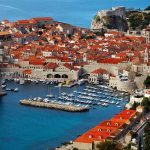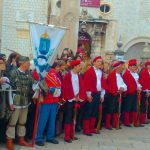Continuing TCN’s look at the rich UNESCO intangible heritage of Croatia, Filipa Marusic takes a closer look at the Festival of St Blaise in Dubrovnik.
Dubrovnik as a prime tourist destination and place on every travellers’ bucket list definitely has something to offer for visitors with heritage such as St. Blaise festivity and Dubrovnik Old City which are under UNESCO protection. The St. Blaise festivity presents a unique example of intangible cultural heritage and continuous traditional event held in Dubrovnik ever since the tenth century. The central part of the festivity has a spiritual dimension and display of the worship of the saint, and this has influenced the cultural heritage of the city and the surrounding area. UNESCO acknowledged this festivity in 2009., 30 years after the Old City of Dubrovnik was listed as a World Heritage Site.
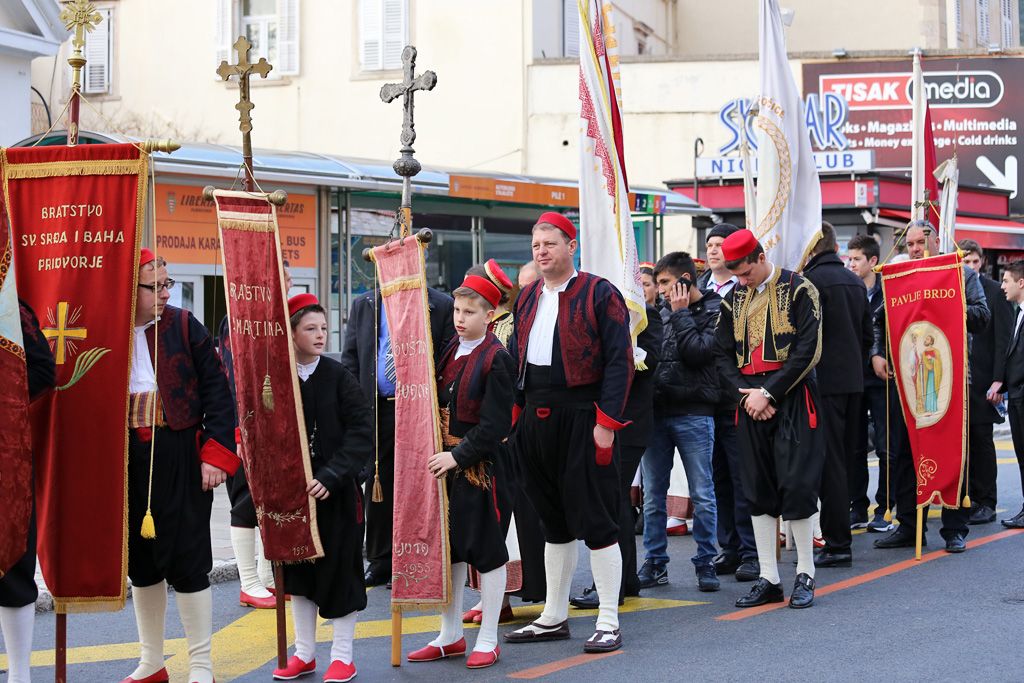
The 1700th anniversary of the martyrdom of St Blaise was celebrated this year in Dubrovnik and the festivity was even more special this year than usual. Saint Blaise (locally called Sveti Vlaho or Blaž) was a well-known physician, born in the ancient city of Sebaste (Asia Minor) with the ability to cure people by touch and a saint for responsible for curing throat diseases. He became the patron saint of Dubrovnik (parac as local people say) because he was the one to protect Dubrovnik from Venetians in 971. when he informed one local priest about plans of the enemy. From 972. the people of Dubrovnik have celebrated this event, and it has been a central event for Dubrovnik and then Old State of Dubrovnik which covered surrounding towns and municipalities like Konavle, Župa and Rijeka Dubrovačka and the islands like Mljet, Lastovo and Pelješac Peninsula.
Some of the traditions connected to the festivity that make it special and recognisable will be presented in this article.
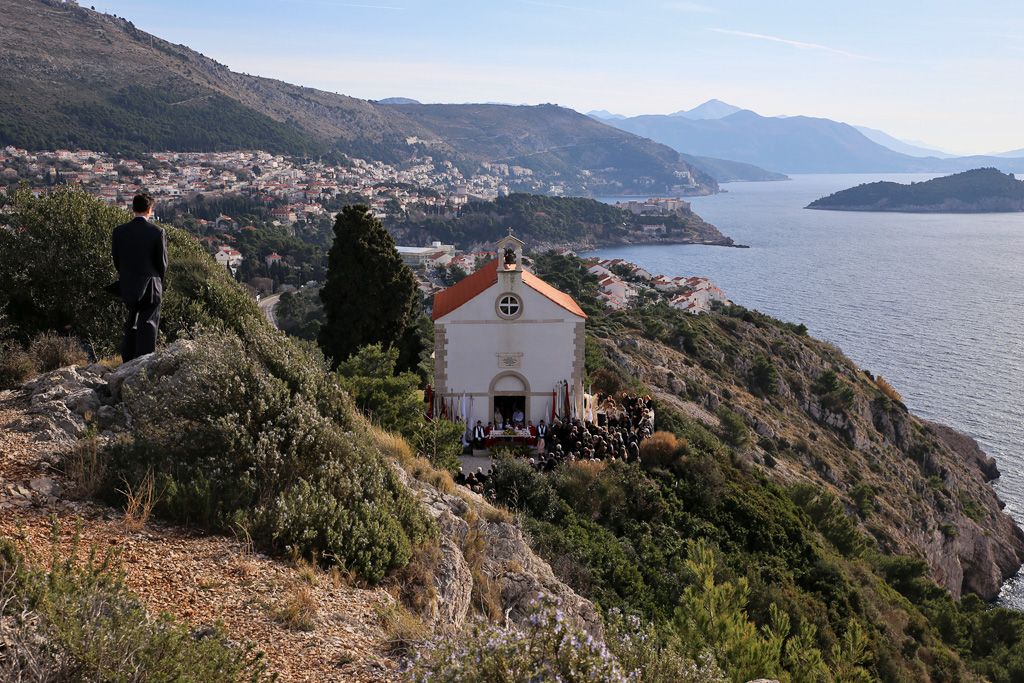
The day before St. Blaise “Kandelora” or Candle Mass is celebrated as an introduction to the festivity. The whole city is involved in processions, banners and flags, church bells and the hymn to the St. Blaise. As St Blaise is in close connection to the day before Candle Mass celebration, Old State of Dubrovnik required from all the fraternities to provide a certain number of candles and this was an order for all the craftsmen from 1448. – if one would fail this order they were required to pay a penalty for not providing the candle. The tradition was also to have statesmen, the harbour superiors and admirals walk in procession with lit candles at sunset. In the times of the Old State of Dubrovnik, the people arriving to Dubrovnik 3 days before and 3 days after the festivity, would be granted legal immunity or safe conduct in cases of legal charges except for the crime. This was introduced as first law in Old State of Dubrovnik in 1190. to promote mercy but also to help residents to settle disputes peacefully. St. Blaise is also considered as the first sign of spring – even though it is still winter, St. Blaise festivity is often blessed with good and sunny weather.
St Blaise festivity was and still is a religious event, and the mass is a central part of the festivity. An event during mass is “grličanje” or throat blessing – the priests place two connected candles against the throat of congregation members, and the person receives the blessing.
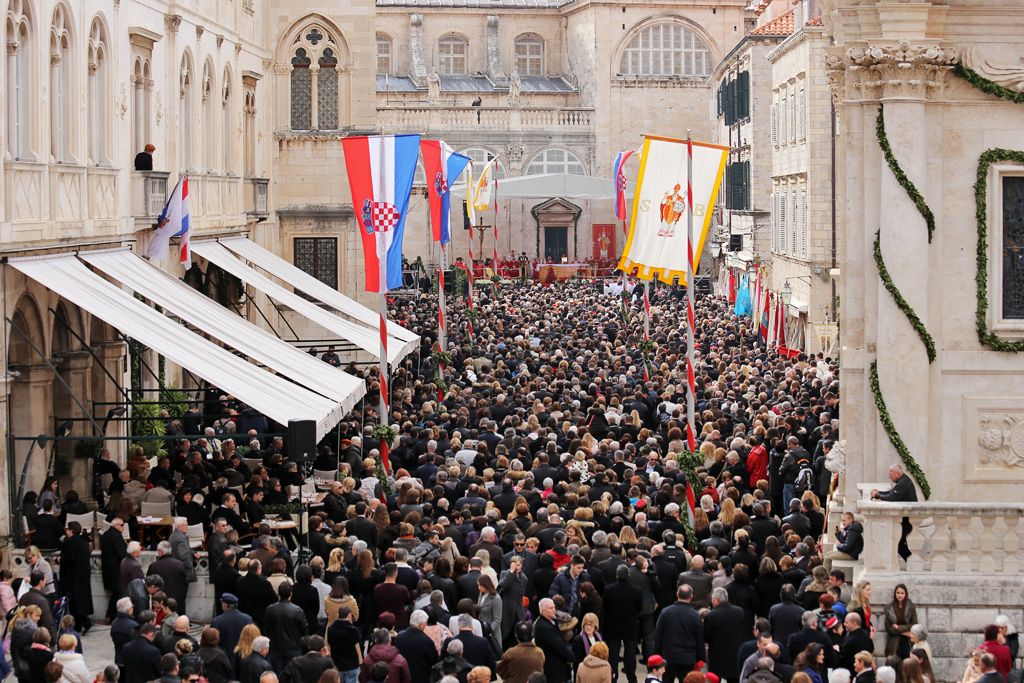
One more tradition that has stayed until today is to have festanjuli – the masters of ceremony – two honourable men, usually a captain and representative of some other profession. During the festivity they are always dressed in black and need to be from Dubrovnik region. They are the ones responsible for inviting members of community to festivity of St. Blaise. This is considered a huge honour in Dubrovnik.
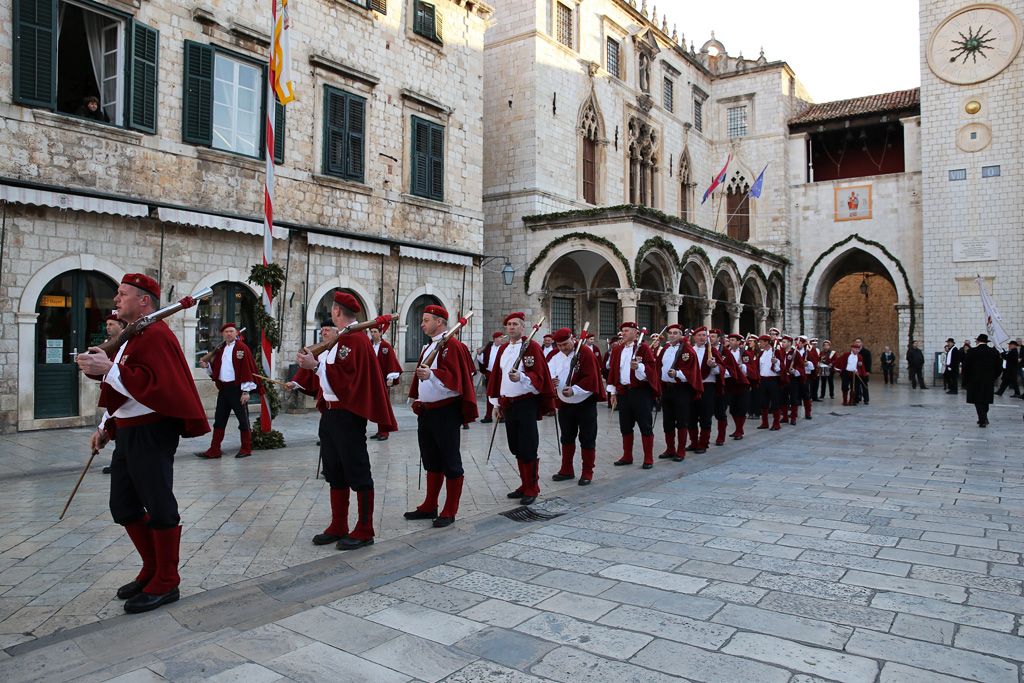
The festivity features the ceremony of bringing flags of the different church guilds to the Dubrovnik city centre. Before there were around 50 flags carried around the city centre and today their number increased to 160 – all are carried by pilgrims from surrounding parishes and other towns in Croatia who came to Dubrovnik to celebrate. Flag carriers are responsible for the procession of city flags from the church of St. Blaise to Ploče Gate where they welcome flags coming from east and then together walk towards Pile gate to meet with the flags from the western side. Together they enter the City to bow down before St. Blaise church and continue the procession. The festive atmosphere is boosted with music from Dubrovnik Brass Band and musket-bearers. This lasts from Candlemass to the closing ceremony of St. Blaise festivity when the flag of the Patron saint is taken down from Orlando column, and this marks the end of the festivity. A special part of the festiity is the twirling of flags and to be a flag bearer has special meaning for locals. The flag should be dipped before the Saint three times and then three times to the left and three times to the right. This requires both skill and strength.
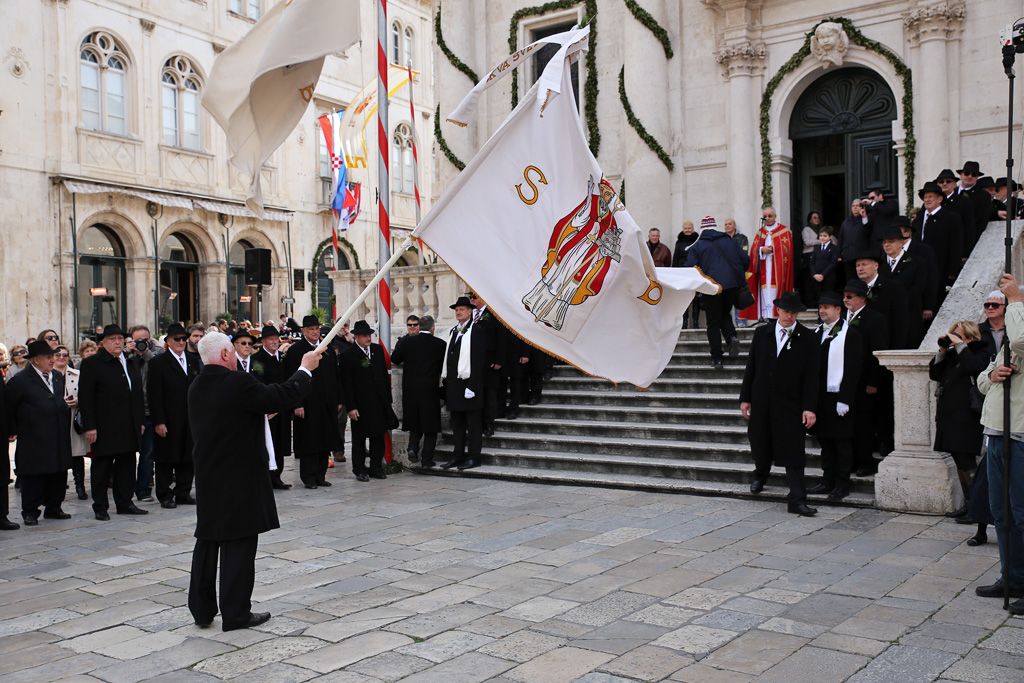
To honour St. Blaise, Dubrovnik organises numerous cultural, entertainment, musical and sports events. This makes Dubrovnik one of the true examples of cities whose identity is in tight connection to its patron saint. The festivity starts every February 2nd and the central celebration is on February 3rd. This is the time to be in Dubrovnik – you can see and participate in this colourful procession, enjoy the city centre full of people celebrating their continuous tradition.
Source: Ministry of Culture, Tourist Board Dubrovnik, Year of St. Vlaho, Dubrovnik portal

